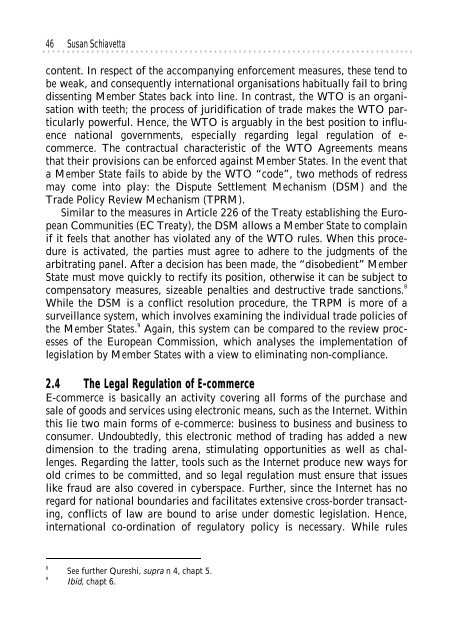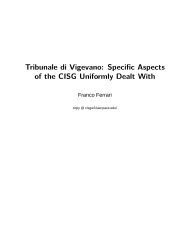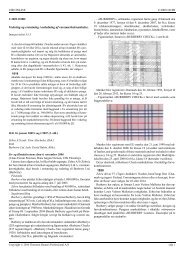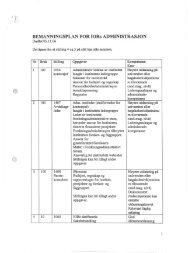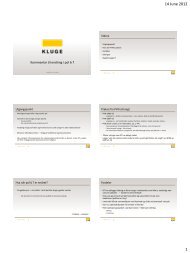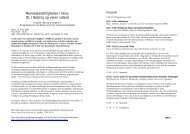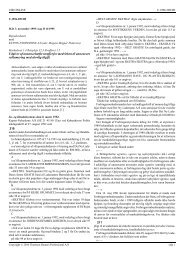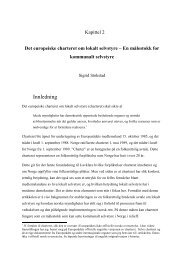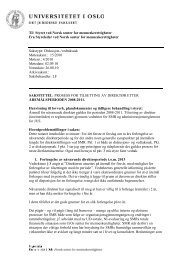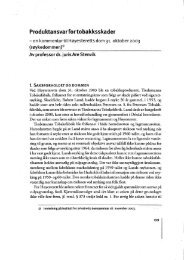Lee A. Bygrave (red.) YULEX 2002 - Universitetet i Oslo
Lee A. Bygrave (red.) YULEX 2002 - Universitetet i Oslo
Lee A. Bygrave (red.) YULEX 2002 - Universitetet i Oslo
Create successful ePaper yourself
Turn your PDF publications into a flip-book with our unique Google optimized e-Paper software.
............................................................................<br />
46 Susan Schiavetta<br />
content. In respect of the accompanying enforcement measures, these tend to<br />
be weak, and consequently international organisations habitually fail to bring<br />
dissenting Member States back into line. In contrast, the WTO is an organisation<br />
with teeth; the process of juridification of trade makes the WTO particularly<br />
powerful. Hence, the WTO is arguably in the best position to influence<br />
national governments, especially regarding legal regulation of ecommerce.<br />
The contractual characteristic of the WTO Agreements means<br />
that their provisions can be enforced against Member States. In the event that<br />
a Member State fails to abide by the WTO “code”, two methods of <strong>red</strong>ress<br />
may come into play: the Dispute Settlement Mechanism (DSM) and the<br />
Trade Policy Review Mechanism (TPRM).<br />
Similar to the measures in Article 226 of the Treaty establishing the European<br />
Communities (EC Treaty), the DSM allows a Member State to complain<br />
if it feels that another has violated any of the WTO rules. When this procedure<br />
is activated, the parties must agree to adhere to the judgments of the<br />
arbitrating panel. After a decision has been made, the “disobedient” Member<br />
State must move quickly to rectify its position, otherwise it can be subject to<br />
compensatory measures, sizeable penalties and destructive trade sanctions. 8<br />
While the DSM is a conflict resolution procedure, the TRPM is more of a<br />
surveillance system, which involves examining the individual trade policies of<br />
the Member States. 9 Again, this system can be compa<strong>red</strong> to the review processes<br />
of the European Commission, which analyses the implementation of<br />
legislation by Member States with a view to eliminating non-compliance.<br />
2.4 The Legal Regulation of E-commerce<br />
E-commerce is basically an activity covering all forms of the purchase and<br />
sale of goods and services using electronic means, such as the Internet. Within<br />
this lie two main forms of e-commerce: business to business and business to<br />
consumer. Undoubtedly, this electronic method of trading has added a new<br />
dimension to the trading arena, stimulating opportunities as well as challenges.<br />
Regarding the latter, tools such as the Internet produce new ways for<br />
old crimes to be committed, and so legal regulation must ensure that issues<br />
like fraud are also cove<strong>red</strong> in cyberspace. Further, since the Internet has no<br />
regard for national boundaries and facilitates extensive cross-border transacting,<br />
conflicts of law are bound to arise under domestic legislation. Hence,<br />
international co-ordination of regulatory policy is necessary. While rules<br />
8<br />
See further Qureshi, supra n 4, chapt 5.<br />
9<br />
Ibid, chapt 6.


